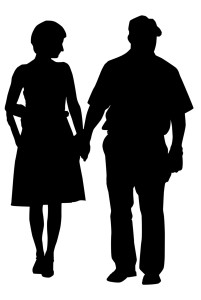Love has a murky middle? Of course! It’s the part that happens after the first euphoria of new love and before contentment or divorce. It’s the part people ask about, “What’s your secret to a long and happy marriage?” or “How did it end this way?”
It’s the no-man’s land of relationships and in a novel it’s the murky no-man’s land of plot and character development. The stages of love are just as complex, with 3, 5, 7, 9 or 10 stages depending on who you read. Then there is the life stages perspective (adolescence, young adult, family, etc.).
What’s a writer to do? I mean, you want to make the love relationships genuine and not everyone can be at the same point or have the same experience at any given stage. The answer is to be aware of the stages, put each character in a stage and then mix it up with life’s curve balls.
There are many sources and websites on all these topics, but here’s a quick run-down.
There are three stages (source here) in which our hormones affect how we react.
1. Lust – gets you out looking for a mate. Testosterone and estrogen levels are high.
2. Attraction – the ‘love struck’ phase. High levels of hormones influence how we act during this stage. Surging levels of dopamine has the same effect as taking cocaine by triggering an intense rush of pleasure. There is less need for sleep or food, increased energy and the rose colored glasses which make every detail a delight. Adrenaline rushes make you sweat, your heart race and your mouth go dry. Increased serotonin keeps the new lover popping into your head. This is the love sick stage. The rejection of love however, can have disastrous consequences too such as depression.
3. Attachment – Vasopressin and oxytocin are hormones released after sex and helps keep people together for long term commitments. Serotonin keeps those warm and fuzzy feelings necessary for long term relationships.
Other factors, some of which are triggered by other hormones, affect how we fall in love and choose a mate. There are physical features such as face shape, height, voice timbre, as well as emotional stability, smarts, status and friendliness. Add to that body language, smell (love those pheromones!), touch and even taste (kissing). These are present in all stages from falling in love to being in love.
From a psychological perspective, there are nine stages of love. For more information, read here.
1. infatuation
2. understanding
3. disturbances
4. the opinion maker
5. the moulding stage
6. the happy stage
7. doubts
8. when sex life plays a pivotal role
9. complete trust
As a story teller, it’s important to know what the stages of love are because that allows us to add details to make the situation authentic and allows the reader to relate to the character. Mix it up with background experiences that affect the failure or success, add her determination to fail or succeed and you’ve created scenarios for us to sympathize with, be repulsed by, or even laugh at.
Choose your character’s stage of love and an aspect of that stage and use it to show us who she is and how she perceives her current situation. Do you remember falling in love and noticing how good that person smelled, how it excited you? Then when you lived together and when that person went away on a trip, how you missed him and took comfort by smelling his clothes? In the attraction stage, it might be wonderful to smell the dirty shirt when you pick it off the floor. Oh the euphoria! But what happens in the attachment or happiness stage? Is the contentment still there when you carry the load of laundry to the washer? Is there passion, resignation or even disgust? That reaction tells us reams about your character, the stage of love she’s in and the dynamics of her relationship.
To understand what triggers your character, consider the science, hormones and the traits we subconsciously use to assess potential mates. Add in the life stage (adolescence, young adult, raising a family, middle age, old age) and a back story and that smooth scientific explanation suddenly gets clouded and twisted by life’s experiences. This is where back story is really important. Will your character go beyond the lust or infatuation stage? Why or why not? What is attractive or repulsive (such as physical features or attitudes) and why? Who does the person remind them of? What happened in their past to form their world view about love and what a relationship should be like? No matter the stage, is he happy, content, discontent, resigned or resentful to be there?
It’s the twists and turns in a character’s back story (and sometimes the current situation) which form a worldview and determines how a character handles each of love’s stages. The steps are the same for all of us but what makes us unique is our previous experiences, our childhood (experiences and role models), and successful and failed adult relationships. It’s also about those walls we all build and the subtle ways we keep our deepest yearnings from being met. That’s who we are and who our characters need to be – a complex of hormones and life experiences, of wishes and dreams fulfilled, sabotaged and failed. Love is what we strive for, biologically and emotionally, and what we aspire to – and if we don’t, that’s another story, isn’t it?
Science can provide the foundation for love’s murky middle, but we, as story tellers, need to mix those hormones with back story, expectations and life stages to make the murky middle a most interesting muddle.

